Local weather and science correspondent
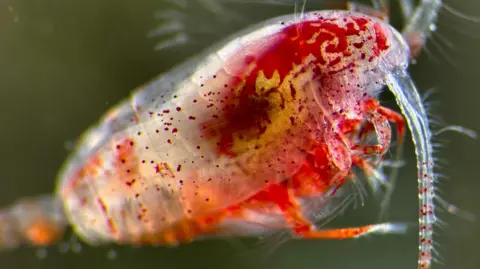 Prof Daniel J Mayor @oceanplankton
Prof Daniel J Mayor @oceanplanktonA tiny, obscure animal usually bought as aquarium meals has been quietly defending our planet from world warming by endeavor an epic migration, in response to new analysis.
These “unsung heroes” referred to as zooplankton gorge themselves and develop fats in spring earlier than sinking tons of of metres into the deep ocean in Antarctica the place they burn the fats.
This locks away as a lot planet-warming carbon because the annual emissions of roughly 55 million petrol automobiles, stopping it from additional warming our environment, in response to researchers.
That is far more than scientists anticipated. However simply as researchers uncover this service to our planet, threats to the zooplankton are rising.
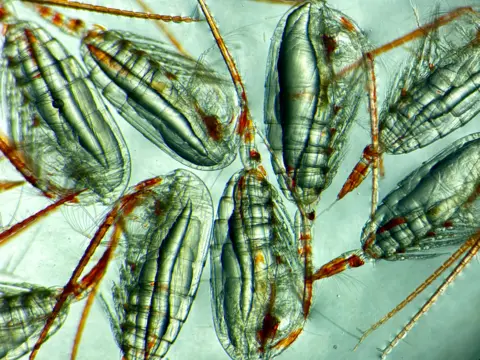 Prof Daniel J Mayor @oceanplankton
Prof Daniel J Mayor @oceanplanktonScientists have spent years probing the animal’s annual migration in Antarctic waters, or the Southern Ocean, and what it means for local weather change.
The findings are “exceptional”, says lead creator Dr Guang Yang from the Chinese language Academy of Sciences, including that it forces a re-think about how a lot carbon the Southern Ocean shops.
“The animals are an unsung hero as a result of they’ve such a cool lifestyle,” says co-author Dr Jennifer Freer from British Antarctic Survey.
However in comparison with the most well-liked Antarctic animals just like the whale or penguin, the small however mighty zooplankton are ignored and under-appreciated.
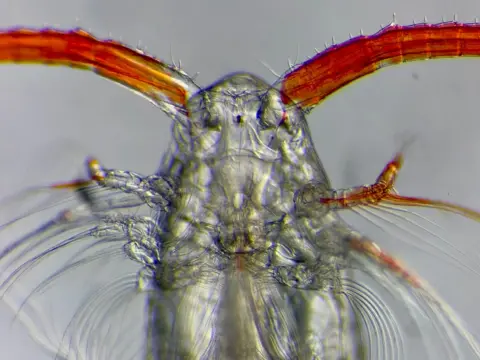 Prof Daniel J Mayor @oceanplankton
Prof Daniel J Mayor @oceanplanktonIf anybody has heard of them, it is in all probability as a sort of fish meals available for purchase on-line.
However their life cycle is odd and engaging. Take the copepod, a sort of zooplankton that could be a distant relative of crabs and lobsters.
Simply 1-10mm in measurement, they spend most of their lives asleep between 500m to 2km deep within the ocean.
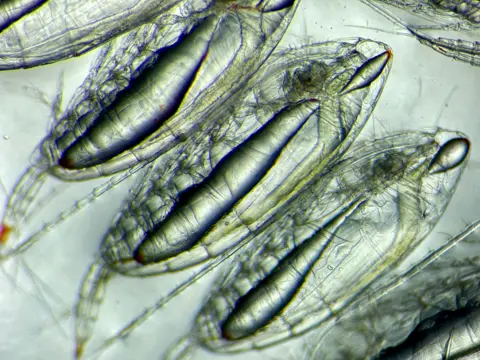 Prof Daniel J Mayor @oceanplankton
Prof Daniel J Mayor @oceanplanktonIn footage taken underneath a microscope, you may see lengthy sausages of fats inside their our bodies, and fats bubbles of their heads, explains Prof Daniel Mayor who photographed them in Antarctica.
With out them, our planet’s environment can be considerably hotter.
Globally the oceans have absorbed 90% of the surplus warmth people have created by burning fossil fuels. Of that determine, the Southern Ocean is chargeable for about 40%, and a variety of that’s right down to zooplankton.
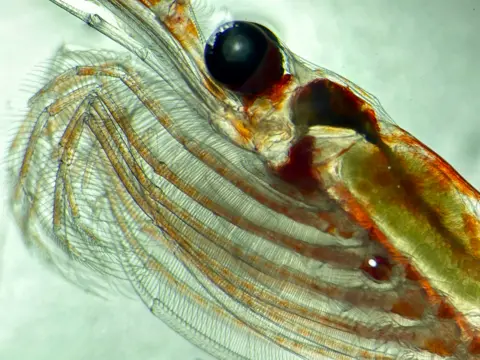 Prof Daniel J Mayor @oceanplankton
Prof Daniel J Mayor @oceanplanktonHundreds of thousands of kilos is being spent globally to know how precisely they retailer carbon.
Scientists had been already conscious that the zooplankton contributed to carbon storage in a day by day course of when the animals carbon-rich waste sinks to the deep ocean.
However what occurred when the animals migrate within the Southern Ocean had not been quantified.
The newest analysis focussed on copepods, in addition to different kinds of zooplankton referred to as krill, and salps.
The creatures eat phytoplankton on the ocean floor which develop by reworking carbon dioxide into dwelling matter by means of photosynthesis. This turns into fats within the zooplankton.
“Their fats is sort of a battery pack. After they spend the winter deep within the ocean, they only sit and slowly burn off this fats or carbon,” explains Prof Daniel Mayor at College of Exeter, who was not a part of the research.
“This releases carbon dioxide. Due to the best way the oceans work, should you put carbon actually deep down, it takes many years and even centuries for that CO2 to return out and contribute to atmospheric warming,” he says.
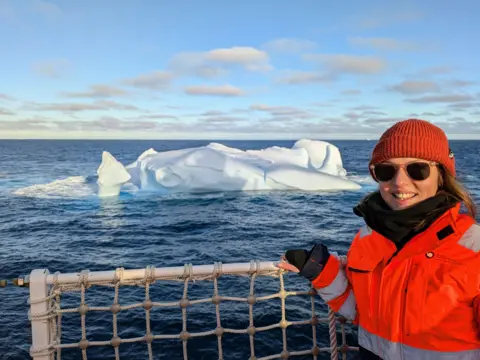 Jennifer Freer
Jennifer FreerThe analysis group calculated that this course of – referred to as the seasonal vertical migration pump – transports 65 million tonnes of carbon yearly to not less than 500m under the ocean floor.
Of that, it discovered that copepods contribute essentially the most, adopted by krill and salps.
That’s roughly equal to the emissions from driving 55 million diesel automobiles for a 12 months, in response to a greenhouse gasoline emissions calculator by the US EPA.
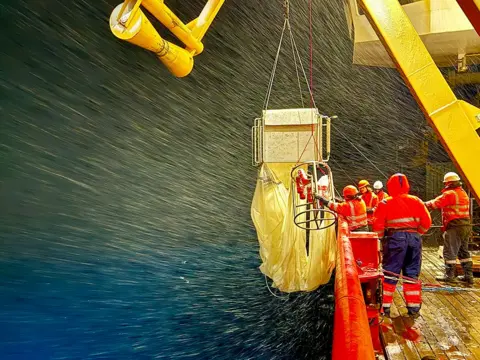 Prof Daniel J Mayor @oceanplankton
Prof Daniel J Mayor @oceanplanktonThe newest analysis checked out information stretching again to the Nineteen Twenties to quantify this carbon storage, additionally referred to as carbon sequestration.
However the scientific discovery is ongoing as researchers search to know extra particulars in regards to the migration cycle.
Earlier this 12 months, Dr Freer and Prof Mayor spent two months on the Sir David Attenborough polar analysis ship close to the South Orkney island and South Georgia.
Utilizing giant nets the scientists caught zooplankton and introduced the animals onboard.
“We labored in full darkness underneath purple gentle so we did not disturb them,” says Dr Freer.
“Others labored in rooms stored at 3-4C. You put on a variety of safety to remain there for hours at a time trying down the microscope,” she provides.
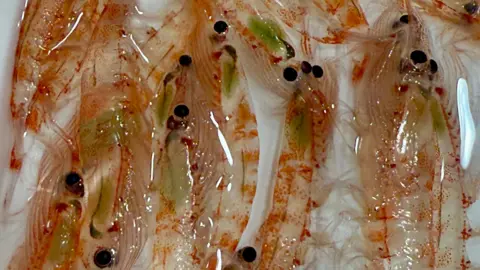 Prof Daniel J Mayor @oceanplankton
Prof Daniel J Mayor @oceanplanktonHowever warming waters in addition to industrial harvesting of krill may threaten the way forward for zooplankton.
“Local weather change, disturbance to ocean layers and excessive climate are all threats,” explains Prof Atkinson.
This might scale back the quantity of zooplankton in Antarctica and restrict the carbon saved within the deep ocean.
Krill fishing corporations harvested nearly half 1,000,000 tonnes of krill in 2020, in response to the UN.
It’s permitted underneath worldwide regulation, however has been criticised by environmental campaigners together with within the latest David Attenborough Ocean documentary.
The scientists say their new findings needs to be integrated into local weather fashions that forecast how a lot our planet will heat.
“If this organic pump did not exist, atmospheric CO2 ranges can be roughly twice these as they’re in the mean time. So the oceans are doing a fairly good job of mopping up CO2 and eliminating it,” explains co-author Prof Angus Atkinson.
The analysis is revealed within the journal Limnology and Oceanography.



